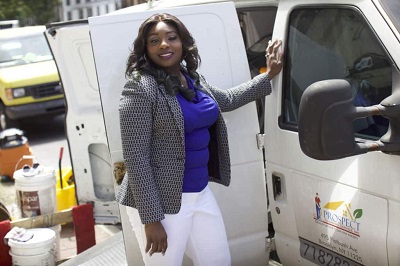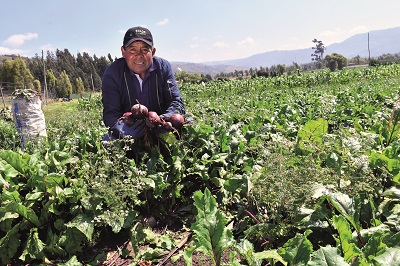
When Gambian immigrant Mariama Jallow aspired to launch an African hair shop in Maine more than five years ago, she lacked a cosmetology license and other means to start a business in an unfamiliar country. Today, however, thanks to assistance from a community development financial institution (CDFI) called Coastal Enterprises, she runs Mariama’s Beauty Supply, a unique hair-braiding salon employing immigrants in Portland.
Across the US, people from diverse economic backgrounds are increasingly recognizing and moving toward community investing, which uplifts marginalized localities by boosting livelihoods and economic resources. This trend has expanded substantially over the past couple decades, delivering job creation, affordable housing, sustainable agriculture, robust infrastructure, and climate change mitigation. According to the US Forum for Sustainable and Responsible Investment, community investing assets rose to $266 billion last year, climbing 44% since 2018.
What’s more, anyone can explore and contribute to them via CDFIs and similarly mission-centered institutions.
“It’s never been easier” to invest for racial, gender and economic justice, according to Justin Conway, vice president of investment partnerships at Calvert Impact Capital, a community investment firm based in Washington, DC.
Fostering Wealth to Counter Injustice
The goal of community development financial institutions is to shift resources to under-served and under-estimated communities and those of color, where longstanding unjust policies and underinvestment have trapped a lot of residents in poverty and hindered their success.
Calvert Impact Capital{GBN} collaborates with organizations worldwide to fix the harms of structural racism, sexism, economic injustice, and environmental injustice. It uses investor dollars to fulfill local needs like housing, healthcare, schooling, and childcare and spread prosperity by supplying inexpensive credit. The nonprofit aims to spur capital markets to make a difference “loan by loan, family by family [and] community by community,” Conway says.
To maximize investor payoffs and promote racial equity, Community Capital Management’s {GBN} Minority CARES investment program combines investment themes, receiving the most financing for community development ventures and people of color, including enterprise development, affordable housing and healthcare, and education and childcare.
“Economic inequality, racial injustice and the need for sustainable investing are very connected,” according to David Sand, the Florida-based company’s chief impact strategist.
In Maine, Coastal Enterprises concentrates its lending, investing, and advising on underprivileged entrepreneurs and businesses in poorer localities or with low-wage workers. It maintains a special focus on America’s rural regions, which often experience limited access to economic resources. To aid in establishing jobs, the CDFI leverages flexible private funding via the federal New Markets Tax Credit (NMTC) program, and even venture capital funds.
Another CDFI, Chicago Community Loan Fund{GBN}, turns investor contributions into advances for projects in low-income minority neighborhoods throughout the city to “ignite the local economy,” according to its president, Calvin Holmes. It takes chances on for-profit and nonprofit organizations that would otherwise struggle to obtain financing, he says. This enables “their growth, their employee growth, their balance sheet growth [and] their ability to spend money in the neighborhoods, which all leads to higher levels of community wealth.”
And Optus Bank, a CDFI in Columbia, South Carolina, uses deposits to offer loans and banking services to elevate disadvantaged locals like minorities and women through businesses, homes, and savings they can hand down to later generations. To address the racial wealth gap that African Americans face, CEO and president Dominik Mjartan says the bank aims to uplift entrepreneurs and empower would-be homeowners in the community.
“When communities are thriving with small businesses, they can employ other members of the community to help them grow, create wealth and ultimately give back to that same community, which hopefully creates long-term effects of growth and self-sufficiency,” Danielle Burns says.
Many Needs, Many Possibilities
Community investing presents a broad scope of causes to finance, with the prospect of steady gains over several years.
Affordable housing and small-business advancement are areas of high impact , according to Danielle Burns, vice president of CNote, a company that harnesses technology to facilitate investment in CDFIs. She also serves on the board of directors at Green America.

“When communities are thriving with small businesses, they can employ other members of the community to help them grow, create wealth and ultimately give back to that same community, which hopefully creates long-term effects of growth and self-sufficiency,” Burns says.
Due to the massive number of jobs resulting from construction of housing, affordable housing is a smart investment. Recent investing trends involve scaling up livelihoods in poorer locales through avenues such as green technology production, affordable housing construction, and mixed-use development, Holmes says. The numerous layoffs suffered due to the coronavirus stress the need to ensure all Americans have, at minimum, living-wage jobs producing savings to buffer against future disasters.
Calvert Impact Capital’s Justin Conway noted that small-business investments have not seen serious risk since 2020 because community-based financing institutions are designed to serve their people. They “work with their customers and provide accommodations…to make sure people can stay in their homes or keep their jobs and doors open through challenges.”
He added that given climate change’s disproportionate burden on disadvantaged communities, investors are now most interested in improving racial and climate justice.
Renewable energy, sustainable food, and education are also major investment sectors, according to Coastal Enterprises’ spokesperson Elizabeth Rogers. She highlighted the opportunity the food system offers, from farming and fishing to processing, manufacturing, and distribution. She added that work from home policies due to the pandemic requirements underscored the importance of funding childcare and broadband as well.
The coronavirus fallout and George Floyd’s killing have raised awareness of entrenched racial wealth disparities and related vulnerabilities, including inadequate livelihoods, housing and healthcare, according to Optus Bank’s Mjartan. He added that those two events have emphasized community investing’s significance and encouraged participation in mission-oriented local initiatives. He pointed out that billions of dollars went into CDFIs last year—more than the total across their prior 25-year history.
“That’s an unprecedented opportunity to build a stronger economy for everyone in America, not just the top 1%,” Mjartan says. He underlined the need to transform this moment into a movement to secure community resilience and equitable opportunities for everyone, no matter their zip code or inherited privilege.
Tips for Investing
From community banks and credit unions to investment advisers and brokerage accounts, the opportunities are growing when it comes to community investing. Supporting a nearby CDFI such as by holding a checking or savings account there, is a good start.
According to Community Capital Management’s Sand, CDFIs are “first financial responders…helping communities survive and rebuild,” so the Federal Reserve deems them “economic shock absorbers.”
Using CDFIs to hold your checking or savings account is a low-risk way to manage your money, with the potential to make a big impact. By definition, federally certified CDFI banks and credit unions must be insured by the Federal Reserve for at least $250,000 per account. You can ask your bank or credit union if it is federally insured.
“Have a real honest conversation with yourself and your family about what areas of impact are important to you,” says CNote’s Burns. She recommends incorporating issue and geographic priorities into your portfolio.
Optus Bank’s Mjartan says if you’re able, putting your money into an account or financial product for five to fifteen years gives it the greatest potential to solve longer-term systemic problems. Community investments can play an important role in every portfolio, no matter what size.

Individual Action Matters
While institutional investors bring large sums to community investing, individuals can also have big impact. Although individuals frequently think their actions are too tiny to achieve change, people are nimbler than institutions and are able to have collective power, putting their dollars to work.
Community investing leaders who have witnessed amazing growth in community development investments appreciate how individuals continue to strengthen this effort with their assets and voices.
“Every person in America can be a community investor,” Mjartan says. “Regardless how much money you have and where you’re located now, you can align your money with your values.”
“Ultimately,” says Fran Teplitz, Green America’s executive co-director for business, investing and policy, “community development investments are about dignity, hope, and opportunity for individuals and neighborhoods left out of the economic mainstream.”







